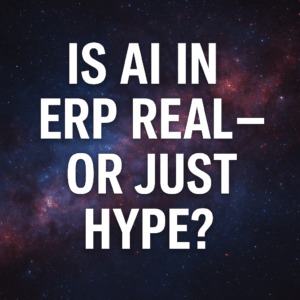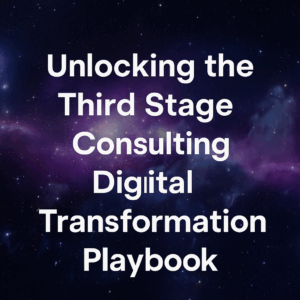Digital maturity is essential for organizations worldwide to stay competitive in a rapidly evolving technological landscape. This article explores the concept of digital maturity, its key components, and actionable steps to enhance it.
Table of Contents
ToggleWhat is Digital Maturity?
Digital maturity refers to an organization’s ability to adapt to and leverage digital technologies effectively. This concept encompasses multiple dimensions, including technology infrastructure, skill sets, business processes, and data architecture. Each element plays a crucial role in determining how well an organization can respond to the demands of digital transformation, innovate, and stay competitive in a rapidly evolving market. Achieving high digital maturity involves not just adopting advanced technologies, but also aligning organizational practices and culture with these innovations. This holistic approach enables organizations to optimize their operations, drive growth, and maintain a strategic edge in an increasingly digital world.
Components of Digital Maturity
1. Technology
Current Systems
- Legacy Systems: Many organizations still rely on legacy systems, which can be a significant hindrance to digital maturity. These systems often lack integration capabilities, are difficult to maintain, and do not support modern digital initiatives.
- Modern ERP Systems: Modern Enterprise Resource Planning (ERP) systems, cloud computing, and advanced analytics platforms provide the foundation for digital maturity. These systems offer improved integration, scalability, and real-time data processing capabilities.
System Modernization
- Cloud Adoption: Migrating to cloud-based solutions offers scalability, flexibility, and cost efficiency. Cloud platforms enable organizations to deploy resources dynamically based on demand, reducing the need for large upfront investments in infrastructure.
- Artificial Intelligence and Machine Learning: Integrating AI and ML into business processes can automate routine tasks, provide predictive insights, and enhance decision-making capabilities.
- Internet of Things (IoT): IoT devices collect and transmit data, offering insights into operational efficiencies, product usage, and customer behavior.
2. Skills
IT Competency
- Up-to-Date Skill Sets: The IT workforce must possess current skills to manage and optimize modern technologies. This includes knowledge of cloud computing, data analytics, cybersecurity, and software development practices.
- Role Specialization: As technology becomes more complex, specialized roles within IT departments, such as data scientists, cybersecurity analysts, and cloud architects, become increasingly important.
Continuous Learning
- Training Programs: Implementing continuous learning programs helps ensure that IT staff stay abreast of technological advancements. This can include formal education, certifications, workshops, and on-the-job training.
- Cross-Functional Training: Encouraging IT staff to gain knowledge in different areas fosters a more versatile and collaborative team. Cross-functional training can enhance problem-solving and innovation.
3. Business Processes
Process Optimization
- Lean and Agile Methodologies: Adopting lean and agile methodologies can streamline business processes, reducing waste and enhancing flexibility. These approaches emphasize continuous improvement and iterative development.
- Process Automation: Implementing automation tools, such as robotic process automation (RPA), can handle repetitive tasks, freeing up human resources for more strategic activities.
Alignment with Technology
- Digital Process Redesign: Redesigning business processes to leverage digital capabilities ensures that technology investments deliver maximum value. This involves rethinking workflows to eliminate inefficiencies and enhance customer experiences.
- Customer-Centric Processes: Focusing on customer experience in process design can improve satisfaction and loyalty. Digital tools can provide personalized, seamless interactions across various touchpoints.
4. Architecture and Data
System Integration
- Integrated IT Architecture: Developing a cohesive IT architecture where systems communicate seamlessly is crucial. This involves using middleware, APIs, and data integration tools to connect disparate systems.
- Microservices Architecture: Breaking down monolithic applications into microservices allows for more flexible and scalable system designs. Each microservice can be developed, deployed, and scaled independently.
Data Quality
- Data Governance: Establishing strong data governance practices ensures data accuracy, consistency, and security. This includes defining data ownership, policies, and procedures for data management.
- Advanced Analytics: Leveraging advanced analytics and big data technologies can uncover insights that drive strategic decision-making. This includes predictive analytics, machine learning, and real-time data processing.
Assessing Digital Maturity
To effectively enhance digital maturity, organizations must first assess their current state. This involves:
Technology Assessment
- System Inventory: Conducting a comprehensive inventory of all IT systems helps identify outdated technologies, integration gaps, and areas needing improvement.
- Technology Benchmarking: Comparing the organization’s technology stack with industry standards and best practices provides a clear picture of where improvements are needed.
Skills Inventory
- Skills Assessment Tools: Utilizing skills assessment tools and frameworks helps identify the current competencies within the IT team and pinpoint areas for development.
- Gap Analysis: Performing a gap analysis between current skills and future needs helps prioritize training and recruitment efforts.
Process Review
- Process Mapping: Creating detailed process maps helps identify inefficiencies, bottlenecks, and opportunities for optimization.
- Stakeholder Feedback: Gathering feedback from process stakeholders, including employees and customers, provides insights into pain points and improvement areas.
Data Evaluation
- Data Audits: Regular data audits help assess data quality, accuracy, and completeness. This includes evaluating data sources, storage, and processing methods.
- Data Management Practices: Reviewing data management practices ensures that data governance policies are being followed and that data is being used effectively.
Defining the Desired Future State
Once the current state is understood, organizations should define their desired future state. This involves:
Setting Goals
- Strategic Objectives: Establishing clear, strategic objectives for digital transformation aligns efforts with the organization’s overall vision and mission. Objectives should be specific, measurable, achievable, relevant, and time-bound (SMART).
- Key Performance Indicators (KPIs): Defining KPIs helps measure progress towards digital maturity goals. These could include metrics related to system performance, process efficiency, and customer satisfaction.
Creating a Roadmap
- Short-Term Milestones: Identifying short-term milestones ensures that the organization makes incremental progress. These milestones should be achievable within a few months and provide quick wins.
- Long-Term Strategic Initiatives: Long-term initiatives should focus on more significant transformations that require substantial time and resources. These initiatives should be broken down into manageable phases.
Balancing Strategy and Execution
- Balanced Scorecard: Using a balanced scorecard approach helps align short-term actions with long-term strategy. This ensures that daily activities contribute to the overall digital maturity goals.
- Regular Review and Adjustment: Regularly reviewing the roadmap and making adjustments based on progress and changing circumstances ensures that the organization stays on track.
Avoiding Common Pitfalls
Many organizations aim for high digital maturity but fall short due to various pitfalls. Common issues include:
Overambitious Goals
- Realistic Planning: Setting realistic goals that are achievable within the given timeframe and resources is crucial. Incremental progress is often more sustainable than attempting a rapid, large-scale transformation.
- Prioritization: Prioritizing initiatives based on impact and feasibility helps manage resources effectively and ensures that critical areas are addressed first.
Inadequate Investment
- Resource Allocation: Ensuring that adequate resources, including budget, personnel, and technology, are allocated to digital transformation efforts is essential. Underinvestment can lead to stalled projects and unmet goals.
- Executive Support: Securing support from senior leadership ensures that digital transformation is prioritized and adequately funded. Executive buy-in is crucial for overcoming resistance and driving change.
Poor Change Management
- Change Management Frameworks: Implementing robust change management frameworks, such as ADKAR or Kotter’s 8-Step Process, helps manage the human aspects of digital transformation.
- Communication and Engagement: Regular communication and engagement with employees ensure that they understand the changes, their benefits, and their roles in the transformation process.
Achieving Digital Maturity
To optimize digital maturity, organizations should:
Conduct a Thorough Assessment
- Comprehensive Evaluation: A thorough evaluation of current technologies, skills, processes, and data provides a clear understanding of the starting point.
- Stakeholder Involvement: Involving stakeholders from across the organization ensures that the assessment captures diverse perspectives and needs.
Develop Realistic Plans
- Actionable Plans: Creating detailed, actionable plans that outline specific steps, timelines, and responsibilities ensures that digital transformation efforts are well-coordinated.
- Contingency Planning: Developing contingency plans helps address potential challenges and ensures that the organization can adapt to changing circumstances.
Invest in Skills and Training
- Ongoing Development: Investing in ongoing development programs for IT staff ensures that they remain equipped to handle new technologies and processes.
- Diverse Training Methods: Utilizing a mix of training methods, including online courses, workshops, and hands-on training, accommodates different learning styles and needs.
Manage Change Effectively
- Change Champions: Identifying and empowering change champions within the organization helps drive adoption and support for digital transformation initiatives.
- Feedback Mechanisms: Implementing feedback mechanisms allows employees to share their experiences and concerns, enabling continuous improvement.
Monitor Progress
- Regular Reviews: Conducting regular reviews of digital transformation progress helps identify areas needing adjustment and ensures that initiatives stay on track.
- Data-Driven Decision Making: Using data to drive decisions ensures that adjustments are based on objective insights rather than assumptions.
By following these steps, organizations can steadily advance their digital maturity, ensuring they remain competitive in an increasingly digital world. This holistic approach ensures that technology investments deliver value, processes are optimized, and the workforce is equipped to thrive in a digital environment.

How Can We Help with your Business Transformation
At Third Stage Consulting, we are passionate about empowering organizations to successfully navigate the complexities of digital transformation. Whether you’re embarking on a new transformation journey or aiming to optimize your current processes, our expert team is committed to providing comprehensive support throughout every phase. From initial strategy development to execution and beyond, we work closely with you to ensure that your transformation goals are met efficiently and effectively.





